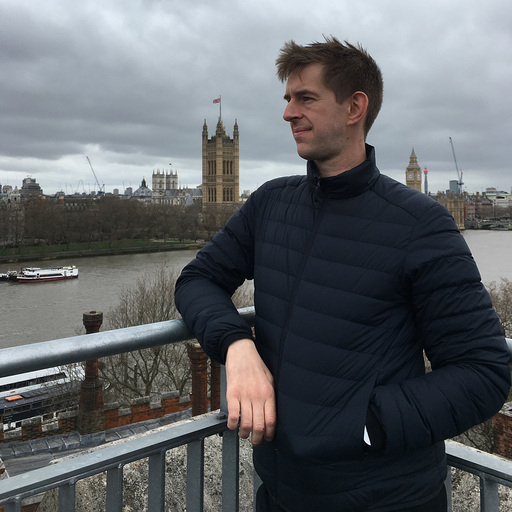Redeveloping the World’s Most Terrifying Airport
- Youtube Views 631,273 VIDEO VIEWS
Video hosted by Fred Mills. This video and article contain paid promotion for Surfshark.
HERE'S a story about the most terrifying airport in the world. Your plane is diving straight for a mountain when at 700 metres the pilot turns off the autopilot. You scrape over the rooftops of the city close enough to see inside people’s homes and just over three kilometres out from landing and 300 metres off the ground, the pilot ignores their instruments, eyeballs a 47-degree turn and touches down on a sliver of a runway which is surrounded by water on three sides.
Heart attack averted, the plane door opens and you step out onto the asphalt of the legendary Kai Tak international airport, Hong Kong. It’s also 5 July 1998 and you were on the last flight to land here before it permanently closed.

Above: A plane coming in to land at Kai Tak over the rooftops of Kowloon.
Skip forward 26 years and this area has come quite a long way. What was once a relic of a bygone era is now the centre of one of the world’s most expensive redevelopment projects.
Getting around the city has come a long way as well. Hong Kong today lays a proud claim to having the best public transport in the world. Its trains, trams, ferries and buses provide 9.7 million journeys every day.
Almost half of all households are within 500 metres of an MTR station and trains arrive on time an incredible 99.9% of the time. Part of the reason Hong Kong’s infrastructure is so good is because it has to be.
7.4 million people live in Hong Kong, mainly squeezed into super-tight pockets of housing, which is among the most densely populated on earth. Between these urban centres are around 500 mountains and the South China Sea, so anything that gets built here has to do so with infrastructure in mind.
Preparing for lift-off
Back to Kai Tak. The site of the old airport is located in Kowloon Bay, right in the heart of the city. In 2007 a plan was approved which would turn the 320-hectare site into a mixed use residential, commercial and leisure district.
The tip of the former runway is being transformed into a tourism and leisure hub, featuring a Foster + Partners-designed cruise terminal which opened in 2013. Meanwhile, the rest of this site is being transformed into a premium housing and commercial district, and a large park.

Above: The Kai Tak Cruise Terminal opened in 2013.
At the top of the site, a 50,000-seater stadium is nearing completion, and work is underway on a large residential neighbourhood. When it’s completed, some 150,000 people will live on the site, making it one of the densest urban areas in the world, and connecting all of those people to the rest of the city is a major challenge.
The north of the site is bordered by two of the busiest roads in east Kowloon. To stop the development being cut off from everything else, a series of tunnels and bridges are being constructed around the perimeter of the site.
But with such a dense network of roads, how do you build something that is big enough to meet capacity, while not having any impact on the constant flow of traffic nearby? That’s a headache for Hong Kong’s civil engineers who are dedicated to making sure people’s journeys around the city are as smooth as they can be.
The challenges
Balancing the needs of the development and the demands of heavy traffic was a problem the Hong Kong Civil Engineering and Development Department faced at the north of the site, where a 140-metre-long tunnel was needed to connect Shing Kai Road to Choi Hung Estate.
With shallow underpasses like this, the easiest option is often to use the cut and cover method. This involves digging a trench and laying tunnel segments which are then covered back over. But here, that would involve diverting 20 lanes of traffic including two major arterial roads.
No problem, time to fire up a tunnel boring machine and get digging. Well actually that’s not an option either. Because Hong Kong is so dense, the land underneath this area is crossed by a series of water mains, electrical cables, storm drains and sewers, and foundations for the Kwun Tong Bypass viaduct.

Above: An illustration of the tunnel between Shing Kai Road and Choi Hung Estate.
Had the tunnel been deep enough that wouldn’t be a problem, but for such a short stretch, a shallower tunnel was needed, which would expose a crucial floor of TBMs.
When a TBM makes its way through the earth, it produces an effect called settlement. As it excavates soil, this creates a weakness in the ground above the cutterhead as earth moves down to fill the void.
With enough clearance this won’t have an effect on anything above, but the alignment at Choi Hung lies just under seven metres beneath the surface at its shallowest point. The effect of settlement, made worse by the weak alluvial soil, would pose a serious risk to the nearby utilities.
So, how do you solve a problem like Choi Hung? The answer was a rectangular tunnel boring machine (RTBM). This was the first of its kind ever to be used in Hong Kong, and there are only a handful of RTBMs in existence around the world.
The shape of things to come
Here’s how they work: the rectangular shield houses five cutting heads. One in the centre does the majority of the work, while four in each corner rotate elliptically creating a rectangular excavation. This gets dropped into a shaft and is pushed forwards by a hydraulic jack.
To reinforce the tunnel, 92 concrete segments, cast nearby, are dropped in behind the RTBM one at a time. When the tunnel is complete, the jack seals the gaskets and the RTBM is removed on the other side.
But how is this safer than a standard TBM? When a circular TBM creates settlement, this is focused onto a point at the top of the cutter head. Because the RTBM has a large flat surface, it spreads the effect of the settlement over a larger area, causing less disruption to anything above it.

Above: Rectangular TBMs cause less damage to the soil above.
The Choi Hung tunnel opened in November 2021 and the method has proved so successful it’s being used elsewhere on the project.
But what is it all for? With such a huge amount of effort going into using next-generation technology, surely this tunnel must be used for a major new highway or a new rail line? Well, no. Both the Choi Hung and Sung Wong Toi tunnels are pedestrian subways.
It might seem surprising that such a huge amount of effort and innovation is going into something as simple as a pedestrian underpass, but that’s kind of the point. Attention to detail on something as small as this is exactly what makes Hong Kong’s civil engineers some of the best in the world, and what allows this city to keep moving.
Get Surfshark VPN here and enter promo code B1M for an extra 3 months for free.
Video hosted by Fred Mills. Additional footage and images courtesy of Airboyd, Toho Co. LTD, Sony Pictures, Tristar Pictures, Buena Vista Home Entertainment, Criterion Collection, TVB News, Highways Department HK SAR, Hong Kong Civil Engineering and Development Department, RTHK, Hip Hing Construction.
We welcome you sharing our content to inspire others, but please be nice and play by our rules.








